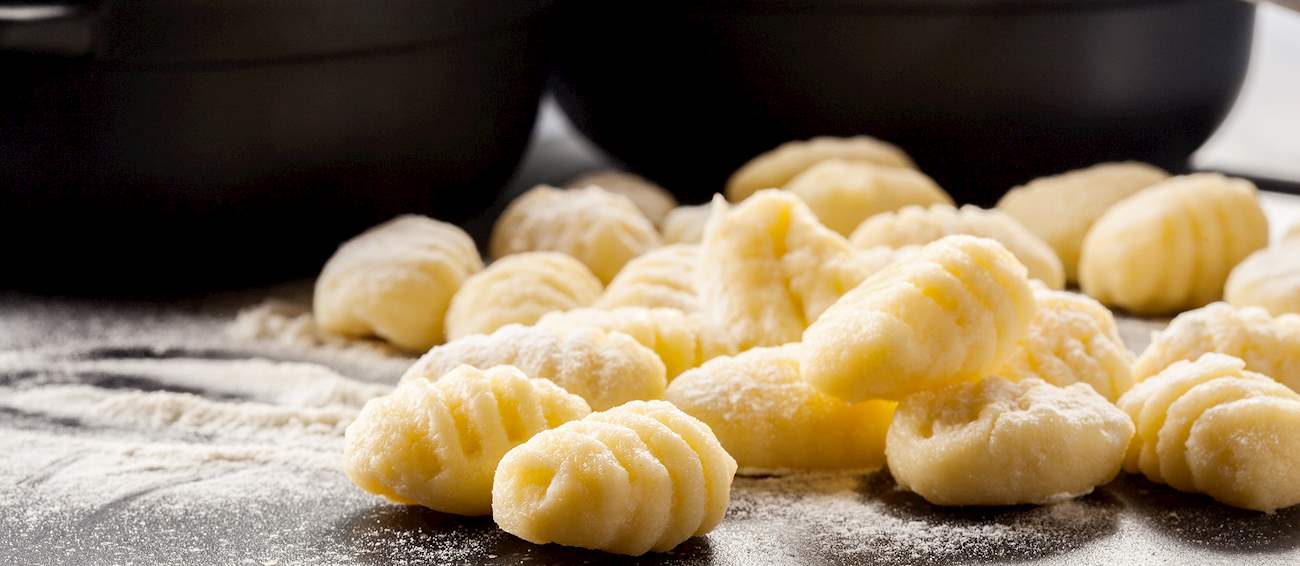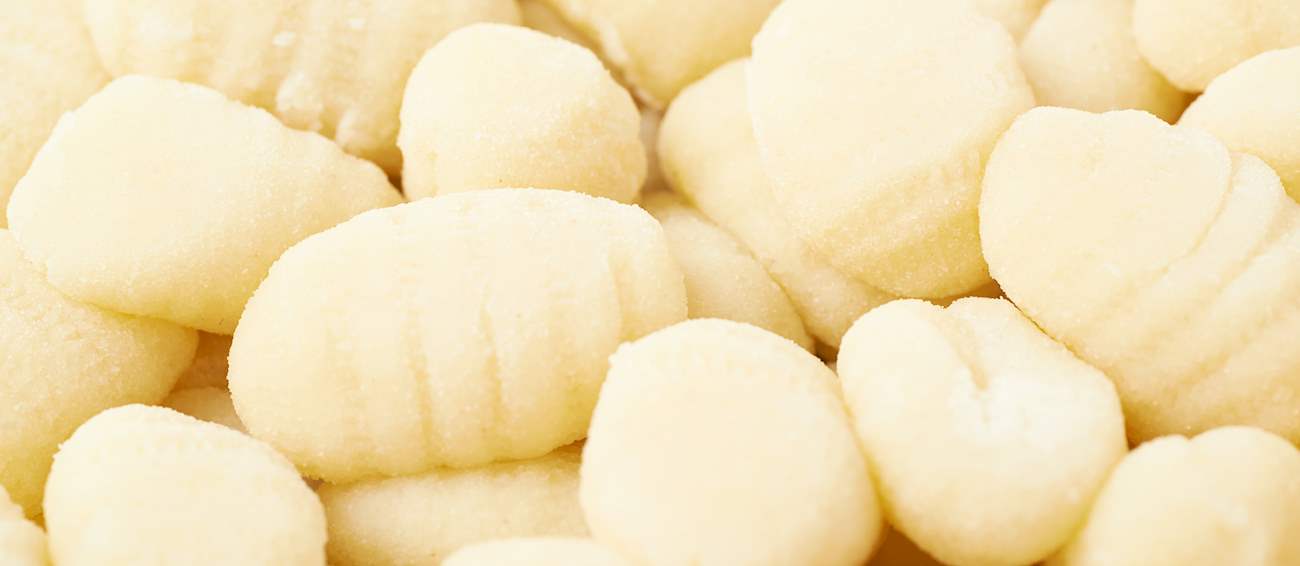Gnocchi (Dumpling Type)
This is the traditional Italian form of dumplings. Today, the word gnocchi usually refers to a dumpling made with potato-based dough shaped into thick bite-sized pieces and pressed into a ribbed wooden board or grater to create an imprint, which helps the sauce to adhere to each piece.
They are typically boiled in large amounts of salted water or fried in shallow oil, a technique typical for some Italian regions. Gnocchi are believed to have been a predecessor of pasta, and historical records show that the term gnocchi, or gnocco, was sometimes interchangeably used with the word maccherone, a word that once referred to all pasta in general.
Before the introduction of the potato, they were made with any available flour, most commonly wheat and semolina, while gnocchi in mountain regions was made with barley, rye, or chestnut flour. During times of extreme poverty, they were occasionally made with grated and soaked stale bread. Read more
Potato only became the star gnocchi ingredient in the 19th century, by which time this New World import had begun making common appearances in Italian households. The proportion of flour and mashed potatoes has drastically changed since the first potato gnocchi was created – today, mashed potatoes are the foundation of the dough, with only a small amount of flour used to bind the ingredients together.
Although potato gnocchi are the most common variety, Italy is abound with numerous gnocchi varieties, and each Italian region has its own favorite. These varieties often bear different names, such as malfatti, strangulaprievete, malloreddus, or cavattieli, and they use different base ingredients such as ricotta, spinach, pumpkin, and even beetroot.
The essential accompaniment to any gnocchi serving is the sauce. The most common are traditional tomato sauce and flavorful butter and sage, but the possibilities are numerous and often include creamy cheese-based sauces, ragùs, and extras such as cured meat and vegetables, combined with fragrant Italian herbs and spices.



